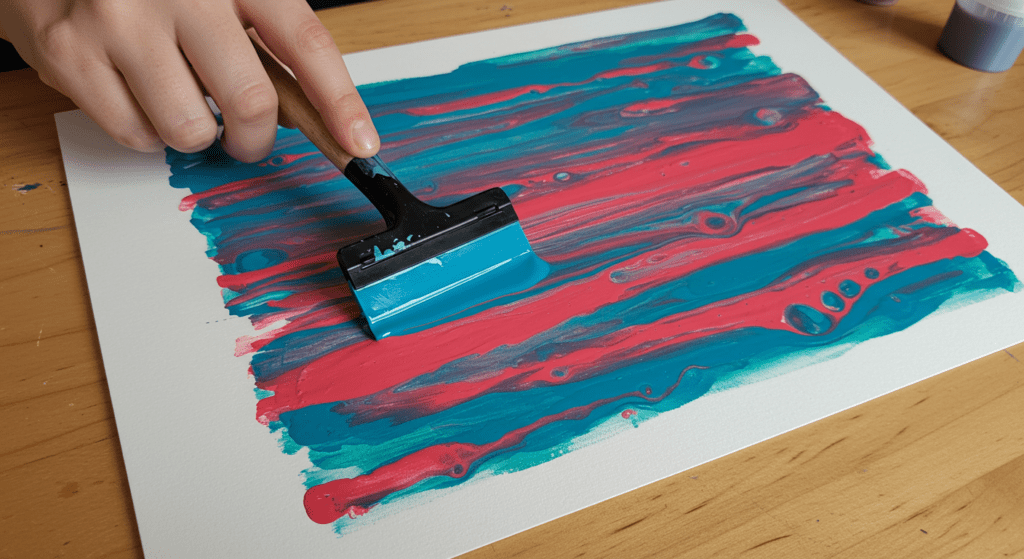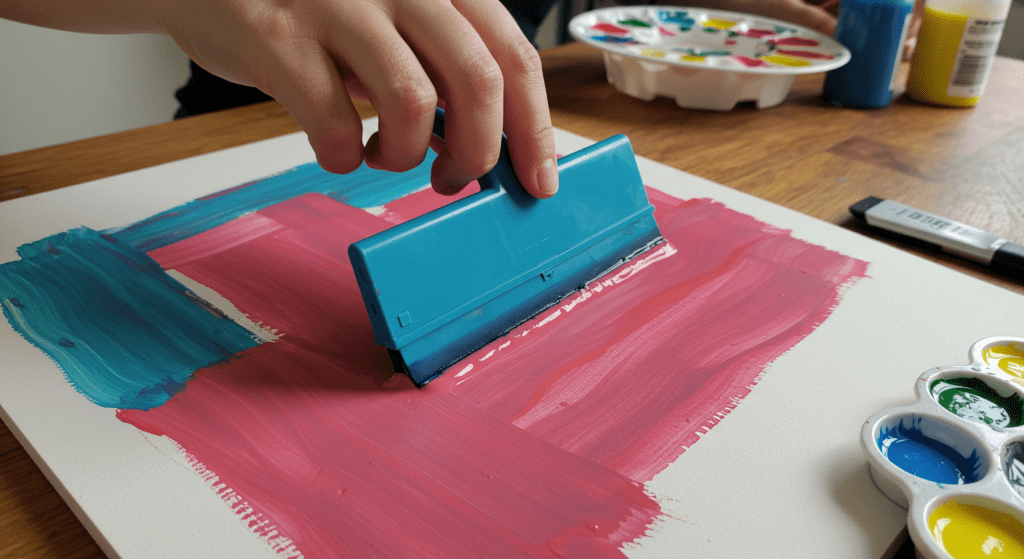Table of Contents
- Introduction
- What is Squeegee Painting?
- History and Evolution of Squeegee Painting
- Materials and Tools Required
- Step-by-Step Guide to Squeegee Painting
- Techniques to Master
- Benefits of Squeegee Painting
- Common Mistakes to Avoid
- Conclusion
- FAQs
Introduction
Squeegee painting is an exciting and dynamic form of abstract art that involves using a squeegee to spread paint across a canvas, creating stunning and unpredictable designs. This technique has gained popularity among artists and enthusiasts due to its simplicity and the freedom it offers for creative expression.

What is Squeegee Painting?
Squeegee painting is a form of abstract art where paint is applied to a surface and manipulated using a squeegee, a tool commonly used for cleaning windows. This method allows artists to create fluid, layered, and textured compositions, often resulting in visually striking and unique pieces.
History and Evolution of Squeegee Painting
While squeegee painting has been around for decades, it gained significant attention when renowned artists like Gerhard Richter began incorporating it into their works. Over time, the technique has evolved, with artists experimenting with different paint viscosities, surfaces, and tools to create diverse effects.
Materials and Tools Required
To start with squeegee painting, you need:
- Acrylic or oil paints
- A squeegee (various sizes for different effects)
- A canvas or any suitable painting surface
- Palette knife (optional for additional textures)
- Drop cloth or protective covering for workspace
- Paint mixing cups and palette
- Water or medium for paint dilution (if needed)
Step-by-Step Guide to Squeegee Painting
- Prepare Your Workspace – Cover your work area to protect it from spills.
- Select Your Colors – Choose a color palette that complements your artistic vision.
- Apply Paint to Canvas – Either pour or dot paint directly onto the canvas.
- Use the Squeegee – Drag the squeegee across the paint in different directions to create unique patterns.
- Experiment with Techniques – Tilt the canvas, overlap layers, or use multiple squeegee strokes.
- Let It Dry – Allow the artwork to dry completely before framing or displaying it.
Techniques to Master
- Layering Colors: Applying different colors in stages for depth.
- Directional Strokes: Dragging the squeegee in controlled or random movements.
- Pressure Variation: Adjusting pressure for thicker or thinner applications.
- Texture Creation: Using textured squeegees or adding mixed media elements.
Benefits of Squeegee Painting
- Easy and Beginner-Friendly: No advanced skills required.
- Unique and Unpredictable Results: Each artwork is distinct.
- Stress-Relieving: A great way to relax and express creativity.
- Quick and Fun: Fast drying and allows for spontaneous creations.
Common Mistakes to Avoid
- Using Too Much Paint: Can result in muddled colors.
- Applying Excessive Pressure: Might remove too much paint from the canvas.
- Ignoring Drying Time: Layering too soon can mix unwanted colors.
- Overcomplicating the Process: Simplicity often produces the best results.
Conclusion
Squeegee painting is a fantastic way to create abstract art with minimal tools and effort. Whether you are an experienced artist or a beginner looking to explore new techniques, this method provides endless possibilities for experimentation and self-expression. With practice, you can refine your technique and produce stunning masterpieces.

FAQs
1. Can I use any type of paint for squeegee painting?
Acrylic and oil paints are the best choices due to their viscosity and drying properties.
2. Do I need a special type of squeegee?
No, any squeegee can work, but artists often prefer rubber-edged ones for smoother application.
3. How long does it take for a squeegee painting to dry?
It depends on the paint type and thickness; acrylics can dry within hours, while oils may take days.
4. Can I mix different painting techniques with squeegee art?
Yes! You can incorporate brushwork, palette knife textures, and other mixed-media elements.
5. Where can I display my squeegee paintings?
They look great in homes, offices, galleries, or even as digital prints for online sale.